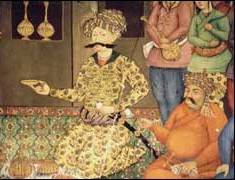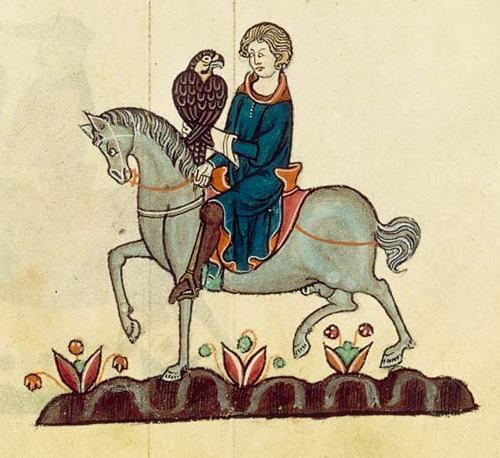

|
The Kartvelologist The Kartvelologist” is a bilingual (Georgian and English) peer-reviewed, academic journal, covering all spheres of Kartvelological scholarship. Along with introducing scholarly novelties in Georgian Studies, it aims at popularization of essays of Georgian researchers on the international level and diffusion of foreign Kartvelological scholarship in Georgian scholarly circles. “The Kartvelologist” issues both in printed and electronic form. In 1993-2009 it came out only in printed form (#1-15). The publisher is the “Centre for Kartvelian Studies” (TSU), financially supported by the “Fund of the Kartvelological School”. In 2011-2013 the journal is financed by Shota Rustaveli National Science Foundation. |
Rustaveli’s "The Man in the Panther Skin": Cultural Bridge from East to West and the Georgians of Safavid Iran
The means by which the story of Rustaveli’s poem reached the intellectual circles of the England of Shakespeare’s time remains a mystery. Only conjectures may be made on this issue. One of these conjectures seem to me relatively more convincing: the circle of Islamised Georgians at the Safavid court in Persia, in particular Allahverdi Khan and his family. The point is that towards the end of the 16th century the Iranian royal court was visited by a large embassy of Englishmen led by the well-known diplomat Antony Sherley. The Englishmen sojourned long at the Shah’s court and, with the support of Shah Abbas and his foremost confidant and commander Allahverdi Khan, they reorganized and rearmed Iran’s army. After this Antony Sherley left for Europe in the rank of the Shah’s envoy, where for years he facilitated the establishment of political and trade relations between Iran and Europe. This period coincides exactly with the entry of the story of MPS into England. keywords:“The Man in the Panther Skin”, Francis Beaumont, John Fletcher, Allahverdi Khan Category: SCHOLARLY STUDIES Authors: RUSUDAN ENUKIDZE In the Wake of the Manuscripts of Bernarde of Naples
The paper deals with the history of the manuscript materials of Bernarde of Naples, a Capuchin monk on a mission to Georgia in 1670-1677. In particular, it has transpired that originally the materials were preserved in the library of the monastery of Capuchins, and on 7 February 1936 they were moved to the National Royal Library (at present National Library of Naples), where they are preserved to the present day, under the call number “XX. 122”. A study of the lists drawn up by various scholars in the 18th-20th centuries, has shown that in 1886-1936 one Georgian manuscript of Bernarde of Naples was lost, which contained the “Romance” or the Georgian Fairy Tale “Baama”, an earliest, forty-page fragment of the so-called chronicle of “One Hundred Years” of the “Zhamtaaghmtsereli”, and “A small poem “Reskariani”.
keywords: Category: SCHOLARLY STUDIES Authors: RUSUDAN ENUKIDZE Secularization of the Miracle in Medieval Georgian and European Literature
The transformation of miracle in the process of transition from early medieval to late medieval literature takes place along the line of secularization. It comes close to reality, accentuating man’s high, moral, intellectual and physical features. From this point of view, Rustaveli’s “The Man in the Panther Skin” stands at the border of a new period – that of the Renaissance. keywords:Bernarde of Naples, Georgian manuscript, the library of the monastery of Capuchins. Category: SCHOLARLY STUDIES Authors: RUSUDAN ENUKIDZE A Textbook on the History of Georgian Literature in Armenian
The Armenian scholar, Professor Hrachik Bairamyan has for the first time compiled a textbook of Georgian literature of the 5th-19th centuries in Armenian. The book was published by Yerevan State University in 2007. The creation of a textbook, as noted by the author, was due to the demand of the times. The Armenian youth evinces considerable interest in the literature and culture of neighbouring Georgia. Hitherto there had not existed either an original or translated textbook. Hrachik Bairamyan’s book aims at filling this great gap. The author compactly acquaints us with the basic stages of development of Georgian literature, the life and works of all significant writers of the 5th-19th centuries. He has deemed it necessary to devote separate chapters to the major classics: Rustaveli, Ilia, Akaki, Vazha, dealing with the history of their translation into the Armenian language, their perception and evaluation by the Armenians, which should be considered a laudable novelty of the book. This book, written with good knowledge of the subject and love, will help Armenian youth to form an idea of the rich literature of the Georgian people, will predispose them with trust for the latter, will raise the Armenian interest in Georgian culture and serve as an impetus for an in-depth study of Georgian-Armenian literary and cultural relations. keywords:Bairamyan, Georgian literature, Georgian-Armenian relations Category: SCHOLARLY STUDIES Authors: RUSUDAN ENUKIDZE
Literary Parallels: Galaktion Tabidze and Henry Longfellow
Galaktion’s poem “The Autumn Day” preserves the mood and peculiarities of form of Longfellow’s “Rainy Day”, but the cause of this mood and the principle of using form elements are altered. Semantic difference is essential in this case. As a result of introducing the motif of love against the backdrop of a similar landscape, the “Autumn Day” deviates from the problems of Longfellow’s poem and naturally finds its place among the works created by Galaktion on the love theme. The relation of the Georgian poet to the lyric of the American author finds its exact place in the frame of intertextual boundaries.
keywords:intertextuality, Galaktion, Longfellow Category: SCHOLARLY STUDIES Authors: RUSUDAN ENUKIDZE |
Categories Journal Archive |





